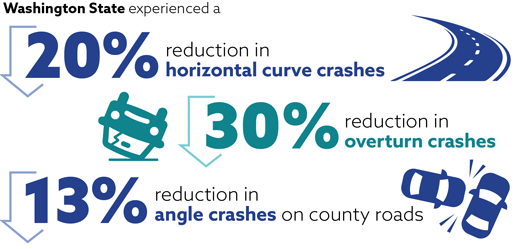U.S. Department of Transportation
Federal Highway Administration
1200 New Jersey Avenue, SE
Washington, DC 20590
202-366-4000
Local roads have a fatality crash rate that is 75 percent higher than interstates (1.02 per hundred million vehicle miles traveled on local roads versus 0.58 on interstates).2 While not all roads in rural areas are local, a number of them are, and according to the Insurance Institute for Highway Safety, in 2018 rural areas accounted for 46 percent of all fatalities.3 In addition, the fatality rate per 100 million vehicle miles traveled in rural areas in 2017 was two times higher than in urban areas.4 To address this issue and other safety concerns, many States and local jurisdictions have developed LRSPs. LRSPs provide local agencies with a strategy to improve local road safety for all road users and support the goals of the State’s overall Strategic Highway Safety Plan (SHSP). These plans provide a way for Federal, State, and local agencies to have a positive impact in areas where a significant amount of fatalities and serious injuries occur by identifying, analyzing, and prioritizing roadway safety improvements on local roads.

Photo courtesy of Molly O’Brien, Kimley-Horn and Associates, Inc.
While a growing number of jurisdictions have developed a LRSP, many struggle to implement their plan and measure results. LRSPs can help localities or States identify local road safety needs and determine, through data analysis, the most effective way of addressing those needs. LRSPs can have a positive impact on local road safety, but only if they are implemented. Despite intensive technical assistance and widespread information about the success of the LRSP approach, implementation has proven to be difficult for many. This report is designed to address this situation through a focus on noteworthy practices and strategies for implementing recommendations included within LRSPs.
Research conducted for this report examined a variety of implementation approaches to determine elements that lead to successful plan implementation and reviewed ways to overcome challenges and barriers associated with implementing a LRSP’s recommendations. This report takes findings from a literature search as well as information gathered from State and local LRSP practitioners and details the challenges local and regional agencies face when implementing their LRSP; what steps can result in successful implementation; and innovative and noteworthy implementation strategies. At the outset, it is helpful to identify what successful implementation entails. Successful implementation includes the following elements:

These are just some elements of successful implementation; however, successful implementation will likely vary by jurisdiction. The important aspects are to get approval for implementation, determine what to implement based on a review of the data, available funding and resources, execute/construct projects, evaluate the effectiveness of LRSP implementation, and continue marketing and communication on the benefits of the plan. Several States and jurisdictions are already experiencing positive improvements from LRSP implementation.

Thurston County, WA prioritized 270 signed curves, applied systemic measures, and saw a 35 percent reduction in target crashes.
2 Highway Statistics, 2018. Federal Highway Administration, Washington, DC. [Return to footnote 2]
3 December 2019. Fatality Facts 2018. Urban/Rural Comparison, Insurance Institute for Highway Safety. [Return to footnote 3]
4 June 2019. Traffic Safety Facts 2017, Rural/Urban Comparison of Traffic Fatalities, NHTSA, DOT, HS, 812 741, Washington, DC. [Return to footnote 4]
| << Previous | Table of Contents | Next >> |
